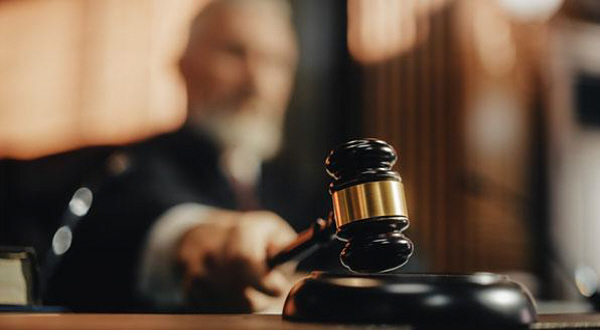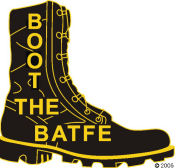

Barrel length tyranny: Activist
courts twisting law on 2A rights

By F Riehl. Aug 15, 2025
Article Source
The fight over short-barreled rifles (SBRs) isn't just about barrel length — it's about whether courts will follow the clear rules laid out in District of Columbia v. Heller (2008) and N.Y. State Rifle & Pistol Association v. Bruen (2022), or will find creative ways to sidestep them.
In Robinson v. U.S., the Eleventh Circuit upheld the federal restriction on SBRs without doing the required historical analysis. Instead, it leaned entirely on U.S. v. Miller (1939), treating that 86-year-old case about short-barreled shotguns as if it automatically decided the SBR question. The Second Amendment Foundation (SAF), along with the Second Amendment Law Center, the California Rifle & Pistol Association, and the Minnesota Gun Owners Caucus, filed an amicus brief urging the Supreme Court to take the case — and to set the record straight.
Step 1: SBRs are 'arms' under the Second Amendment
Under Bruen, the test is simple:
- 1. Does the "plain text" of the Second Amendment cover the conduct?
- 2. If yes, does the government's restriction align with the Nation's historical tradition of firearm regulation?
SAF argues the first step isn't complicated. "All firearms constituted 'arms,'" Heller explained, citing founding-era sources (554 U.S. at 581). Short-barreled rifles are still rifles — the difference is just a few inches of barrel. The Eleventh Circuit's refusal to even engage in historical analysis is what Justice Thomas has criticized in other cases as courts giving "a judicial middle finger" to the Supreme Court's precedents (Duncan v. Bonta, 133 F.4th 852, 890 (9th Cir. 2025) (R. Nelson, J., dissenting)).
No historical tradition of barrel length restrictions
When courts do try to find historical analogues, they come up empty. That's because there's no national tradition of banning common firearms based on barrel length. Winchester, for example, sold its popular Model 1892 "Trapper" lever-action in 14- and 15-inch versions — both would be SBRs under today's NFA rules. These weren't exotic weapons; they were production firearms sold to the public.
SAF points out that over 870,000 registered SBRs exist today, despite the NFA's burdens. And millions of similar firearms — AR pistols, carbines with 16-inch barrels, etc. — are in civilian hands without the NFA's extra taxes and registration requirements.
Even Miller supports SBR protection
The Eleventh Circuit claimed that Miller resolved the SBR question. That's wrong. Miller held that a short-barreled shotgun wasn't protected because there was no evidence it had a militia use. But SBRs do. The U.S. military's M4 carbine has a 14.5" barrel — making it an SBR in civilian form. If Miller is about arms "part of the ordinary military equipment" (307 U.S. at 178), SBRs are exactly that.
As SAF notes, even the U.S. government's own brief in Miller said the Second Amendment "gave sanction only to the arming of the people as a body to defend their rights against tyrannical and unprincipled rulers" — and the arms in question were the ones useful for that mission.
The NFA's inclusion of SBRs was never based on a belief they were "dangerous and unusual." Congress initially planned to ban handguns, and SBRs were swept in only to prevent people from substituting them for banned pistols. When the handgun ban failed due to public backlash, SBR restrictions stayed anyway — a legislative accident that became entrenched law.
Special taxes and Second Amendment
This case is also about money. The NFA imposes a $200 tax on each SBR — the equivalent of thousands in 1934 dollars — and SAF argues there's no historical tradition of taxing common arms.
Historical examples of taxes on arms are rare and targeted at concealable weapons like Bowie knives or pocket pistols, not the standard-issue arms of the day. An 1856 North Carolina law even exempted pistols used for militia mustering from its weapons tax.
Other taxes were openly discriminatory. In 1867, Washington County, Mississippi, imposed a $5–$15 tax "on every gun and pistol" — a sum that would be $108–$325 today — as part of Reconstruction-era efforts to disarm newly freed Black citizens. Such laws are not the "historical tradition" Bruen calls for; they are examples of unconstitutional abuse.
Why Supreme Court should step in
This isn't an isolated case. SAF points out that certain circuits — especially the Ninth and Fourth — have repeatedly twisted or sidestepped Bruen. When lower courts "appear bent on distorting this Court's Second Amendment precedents" (Snope v. Brown, 145 S. Ct. 1534, 1538 (2025) (Thomas, J., dissenting)), waiting for more "percolation" only rewards judicial resistance.
Granting Robinson would let the court affirm two key principles:
- 1. All firearms are "arms" under the Second Amendment.
- 2. Restrictions must be justified by clear historical precedent, not by skipping straight to outdated or misread cases like Miller.
And if the court isn't ready to take the full case, SAF urges at least a grant-vacate-remand, with instructions to do the proper historical analysis.
The stakes
For gun owners, Robinson v. U.S. is about more than SBRs. It's about whether courts will apply Bruen consistently — or whether the Second Amendment will be treated, in Justice Thomas's words, as "a second-class right, subject to an entirely different body of rules than the other Bill of Rights guarantees" (Bruen, 597 U.S. at 70).
If the court takes the case, it could reaffirm that the right to keep and bear arms includes the very arms — like the M4 in military service or the civilian SBR — that are most suited to the Second Amendment's core purposes: self-defense and defense against tyranny. And it could shut down the growing tactic of pricing the right out of reach with punitive taxes.
Republished with permission from AmmoLand.
![]()
























